
The Canadian Pacific Railway (CPR), known as CP Rail between 1968 and 1996 and simply Canadian Pacific, is a historic Canadian Class I railway incorporated in 1881. The railway is owned by Canadian Pacific Railway Limited, which began operations as legal owner in a corporate restructuring in 2001.
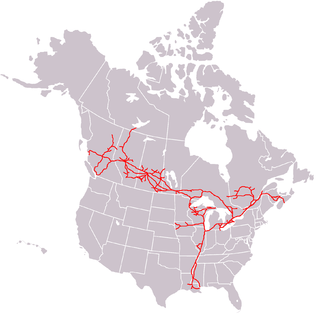
The Canadian National Railway is a Canadian Class I freight railway headquartered in Montreal, Quebec, which serves Canada and the Midwestern and Southern United States.

The BNSF Railway is the largest freight railroad network in North America. One of nine North American Class I railroads, BNSF has 41,000 employees, 32,500 miles (52,300 km) of track in 28 states, and more than 8,000 locomotives. It has three transcontinental routes that provide rail connections between the western and eastern United States. BNSF trains traveled over 169 million miles (272,000,000 km) in 2010, more than any other North American railroad.

VIA Rail Canada Inc., operating as Via Rail or Via, is a Canadian Crown corporation that is mandated to operate intercity passenger rail service in Canada. It receives an annual subsidy from Transport Canada to offset the cost of operating services connecting remote communities.
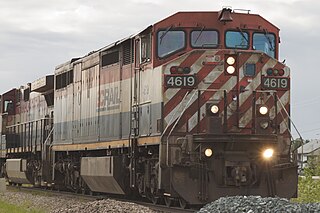
BC Rail is a railway in the Canadian province of British Columbia.

Exo, officially known as Réseau de transport métropolitain, is a public transport system in Greater Montreal, including the Island of Montreal, Laval, and communities along both the North Shore of the Mille Îles River and the South Shore of the St. Lawrence River. It was created on June 1, 2017, taking over from the Agence métropolitaine de transport. The RTM operates Montreal's commuter rail and metropolitan bus services, and is the second busiest such system in Canada after Toronto's GO Transit. In May 2018, the erstwhile Réseau de transport métropolitain (RTM) rechristened itself as Exo.
Rail transport operations are the day-to-day operations of a railway. A railway has two major components: the infrastructure and the rolling stock

A branch line is a secondary railway line which branches off a more important through route, usually a main line. A very short branch line may be called a spur line.

The Newfoundland Railway operated on the island of Newfoundland from 1898 to 1988. With a total track length of 906 miles (1,458 km), it was the longest 3 ft 6 in narrow-gauge railway system in North America.
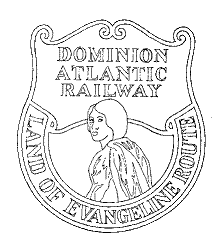
The Dominion Atlantic Railway was a historic railway which operated in the western part of Nova Scotia in Canada, primarily through an agricultural district known as the Annapolis Valley.

The International Railway of Maine was a historic railroad constructed by the Canadian Pacific Railway (CPR) between Lac-Mégantic, Quebec, and Mattawamkeag, Maine, closing a key gap in the railway's transcontinental main line to the port of Saint John, New Brunswick.

The Guelph Transit Commission is a small public transportation agency that operates transit bus services in Guelph, Ontario, Canada. Established in 1929 after the closure of the Guelph Radial Railway Company streetcar lines, Guelph Transit has grown to comprise over 70 buses serving 28 transit routes.

The Portland and Western Railroad is a 466-mile (750 km) Class II railroad serving the U.S. state of Oregon, and is a wholly owned subsidiary of shortline and regional railroad holding company Genesee & Wyoming Inc. The PNWR includes a subsidiary, the Willamette and Pacific Railroad.
Standards for North American railway signaling in the United States are issued by the Association of American Railroads (AAR), which is a trade association of the railroads of Canada, the US, and Mexico. Their system is loosely based on practices developed in the United Kingdom during the early years of railway development. However, North American practice diverged from that of the United Kingdom due to different operating conditions and economic factors between the two regions. In Canada, the Canadian Rail Operating Rules (CROR) are approved by the Minister of Transport under the authority of the Railway Safety Act. Each railway company or transit authority in Canada issues its own CROR rulebook with special instructions peculiar to each individual property. Among the distinctions are:
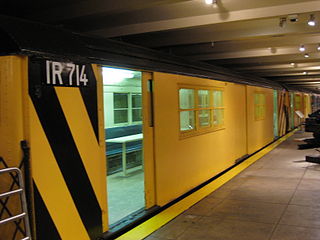
A money train is one or more railcars used to collect cash fare revenue from stations on a subway system and return it to a central location for processing. This train was typically used to carry money bags guarded by transit police to deter robberies.

A private railroad car, private railway coach, private car or private varnish is a railroad passenger car which was either originally built or later converted for service as a business car for private individuals. A private car could be added to the make-up of a train or pulled by a private locomotive, providing privacy for its passengers. They were used by railroad officials and dignitaries as business cars, and wealthy individuals for travel and entertainment, especially in the United States. They were sometimes used by politicians in "whistle stop campaigns". Pay cars with less opulent sleeping and dining facilities were used by a paymaster and assistants to transport and disburse cash wages to railway employees in remote locations without banking facilities.
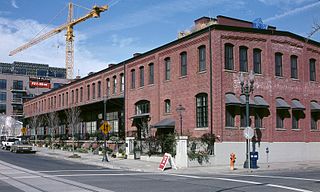
The North Bank Depot Buildings, in central Portland, Oregon, United States, are a pair of buildings formerly used as a freight warehouse and passenger terminal for the Spokane, Portland and Seattle Railway (SP&S). Formed in 1905, the SP&S was commonly known as the North Bank Road during the period in which these buildings were in use. The Portland buildings' passenger facilities were also used by the Oregon Electric Railway after that railway was acquired by the SP&S. Located in what is now known as the Pearl District, the buildings were listed on the National Register of Historic Places in 1996. They were in use by the SP&S and its successor, Burlington Northern Railroad, from 1908 until the 1980s. Only the east building was used as a passenger station, and this usage lasted from 1908 until 1931.
The Algoma Eastern Railway was a railway in Northeastern Ontario, Canada. Originally known as the Manitoulin and North Shore Railway (M&NS) with a charter dating back to 1888, the full mainline was opened to traffic in 1913, serving the area along the north shore of Lake Huron between Sudbury and Little Current on Manitoulin Island. It and its sister railway, the Algoma Central, were originally owned by the Lake Superior Corporation, a conglomerate centred on Sault Ste. Marie which was founded by the American industrialist Francis Clergue. Despite ambitious plans to expand across Lake Huron to the Bruce Peninsula using a railcar ferry, the company failed to develop further and was acquired by the Canadian Pacific Railway in 1930. With freight traffic low during the Great Depression, Canadian Pacific soon abandoned much of the Algoma Eastern mainline in favour of its own Algoma Branch. Remaining sections of the Algoma Eastern line were turned into spurs, with the longest surviving section operated as a branch line known as the Little Current Subdivision.

The Lake Erie and Northern Railway was an interurban electric railway which operated in the Grand River Valley in Ontario, Canada. The railway owned and operated a north–south mainline which ran from Galt in the north to Port Dover on the shore of Lake Erie in the south. Along the way, it ran through rural areas of Waterloo County, Brant County, and Norfolk County, as well as the city of Brantford, where it had an interchange with the Brantford and Hamilton Electric Railway. Construction on the mainline began in 1913. The railway began operations in 1916 as a subsidiary of the Canadian Pacific Railway (CPR), which had purchased the line before construction had finished. In 1931, it was consolidated with the Grand River Railway under a single CPR subsidiary, the Canadian Pacific Electric Lines (CPEL), which managed both interurban railways, though they continued to exist as legally separate entities. Passenger service was discontinued in 1955 but electric freight operations continued until 1961, when the LE&N's electric locomotives were replaced by diesel CPR locomotives and the line was de-electrified. In the same year, service on the mainline from Simcoe to Port Dover was discontinued, but the remainder continued to operate as a branchline which as early as 1975 was known as the CP Simcoe Subdivision. The remainder of the line was officially abandoned in the early 1990s, ending almost seventy-five years of operation.















